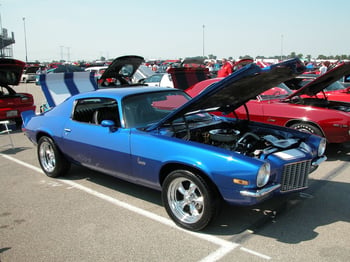 Camaro brake valves can confound even experienced mechanics. Part of the problem is that some of these valves are known by more than one name. For example, metering valves are sometimes called pressure regulator valves or hold-off valves in different GM publications.
Camaro brake valves can confound even experienced mechanics. Part of the problem is that some of these valves are known by more than one name. For example, metering valves are sometimes called pressure regulator valves or hold-off valves in different GM publications.
At Muscle Car Research, an on-line automotive community, a mechanic described a successful metering valve rebuild for a 1970 Chevrolet Camaro. To impart the ideal cylinder surface finish, the brake mechanic used a ball hone – a tool that’s better known as the BRM Flex-Hone®.
Made in the USA by Brush Research Manufacturing (BRM), the Flex-Hone® tool has its share of nicknames. Yet no matter what you call this flexible honing tool, you can improve cylinder surface finish by following some basic guidelines.
Metering Valve Surface Finish
Metering valves promote balanced braking between a car's front and rear wheels. Typically, these hydraulic components are used in rear-wheel drive vehicles with front disc brakes and rear drum brakes. Disc brakes are fast acting, but drum brakes take longer to engage. By regulating the flow rate and fluid pressure, the hold-off valve keeps the front brakes from operating until the rear brakes start working.
In classic cars like the 1970 Chevy Camaro, there’s a metering valve between the master cylinder and the front disc brakes. This pressure regulator valve contains a main bore with a piston. To promote proper sealing, the cylinder walls need to be free of cut, torn, and folded metal. As the brake mechanic at Muscle Car Research explained, even “dirty residue” can cause a leak.
Flexible Honing for Brake valves
Flex-Hone® tools aren’t designed for use with bores that are out-of-round, or that require heavy-duty material removal. That’s why the mechanic from Muscle Car Research inspected the walls of the metering valve for pitting. When the mechanic didn’t discover deep pits or grooves, he chucked a 1” Flex-Hone® tool into a handheld electric drill and applied a good-quality lubricant to prevent loading.
“Hone the sealing surface of the valve using the ball hone and hand drill,” the mechanic explained, “and be sure to follow the RPM and stroke recommendations provided by the hone manufacturer.” For a 1” cylinder hone, 800 RPM is a good guideline. For general speed ranges, stroke rate, and other best practices, the Flex-Hone® Resource Guide is your ultimate source of information.









